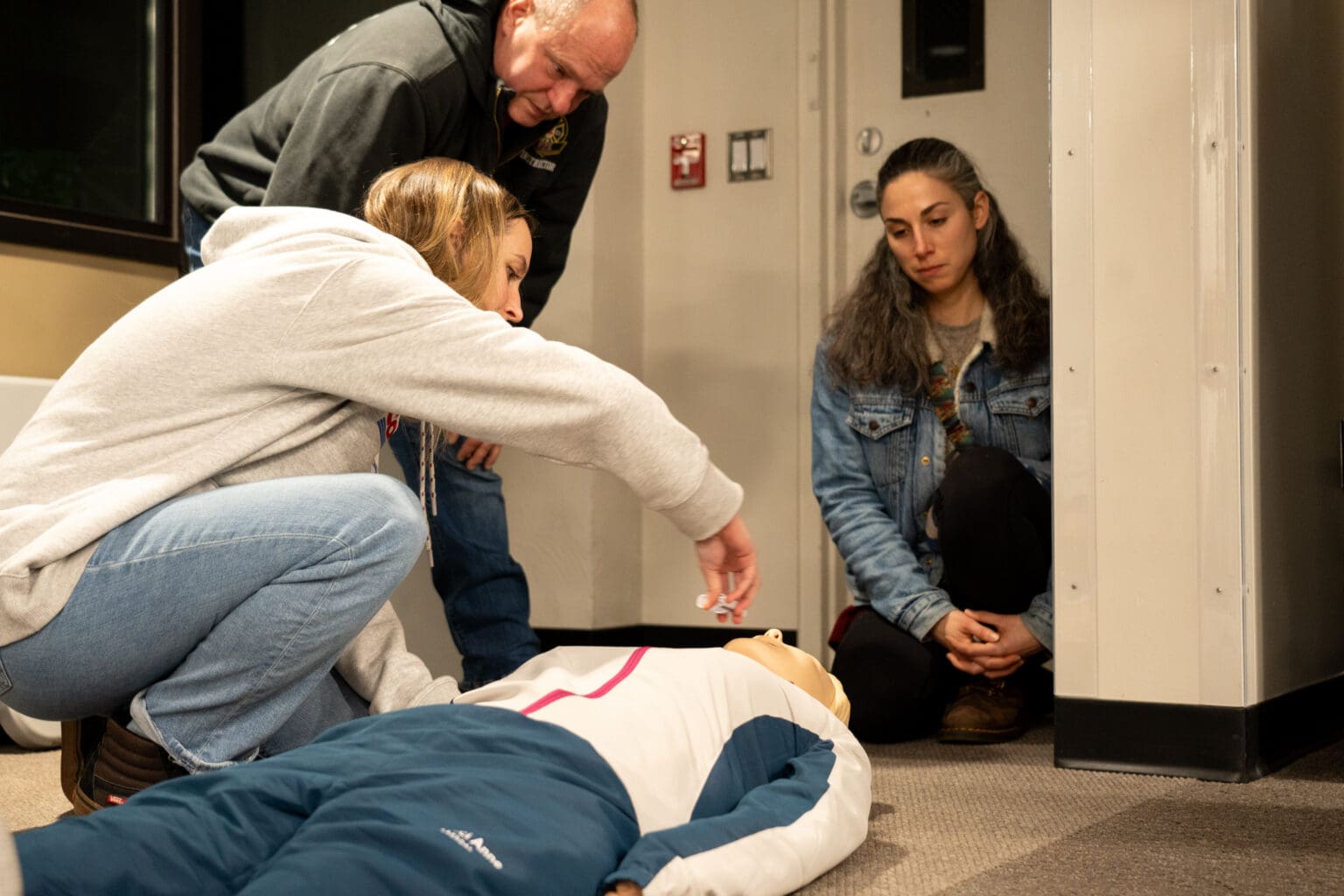Recognizing the signs of a suspected opioid overdose and acting quickly can save someone’s life. With overdose numbers rising in Whatcom County, community members should consider carrying at least two doses of the overdose-reversing naloxone at all times.
[ Read more: Everyone should carry naloxone. Here’s how to get it ]
Learn how to identify the signs of a suspected overdose, and what to do.
Signs and symptoms of an opioid overdose
The individual will not wake up or respond to your voice. They are breathing slowly (fewer than 12 times per minute), irregularly or not at all. The center part of their eye is very small, sometimes called “pinpoint pupils.” Their body is limp, and their skin is cold, clammy or discolored.
Assess
If you see someone who may be overdosing, first, take a deep breath, then “take a 360,” said Steve Cohen, Whatcom County EMS training specialist. Look around for hazards to yourself or to the individual. If you feel unsafe, call 911.
If you feel safe approaching the individual, place your hand on their arm, and with your other hand, tap them on the shoulder and verbally ask if they’re OK. If they tense, they will wake up. Individuals may become angry upon being woken up, so it is important to provide space if you feel them tense.
If they are unresponsive or if they are breathing fewer than 12 times per minute, call 911.
Administer
Make sure the individual is on their back. Take out your nasal naloxone. Using two fingers, find the chin bone and tilt their head back. Using your other hand, place your index and middle fingers on top of the naloxone device, and your thumb on the plunger. Only push the plunger once the device is inside an individual’s nostril.
Flip the individual on their side, away from you. Naloxone may take about 90-120 seconds to work.
Reassess the individual after two minutes, and watch their breathing. If they’re not breathing, breathing irregularly or breathing fewer than 12 times per minute, administer a second dose of naloxone using the same steps above.
Hands-only CPR
Consider CPR while you wait for EMS to arrive. Find the spot in between the two nipples. Interlock your fingers, and give continuous, hard and fast compressions.
Stay with the individual until help arrives.
Quick facts
- Fentanyl can sometimes be mixed with xylazine, a horse tranquilizer that presents the same symptoms as an opioid. Naloxone does not reverse the effects of xylazine.
- Fentanyl is 50 times more potent than heroin.
- You can only overdose on fentanyl if it enters an open portal such as the nostrils, a cut or the mouth. “Your skin is a really good protector, and I have not heard of any documented case where someone got it on their clothes and had signs and symptoms of an overdose,” Cohen said.
- Washington state averages 5.6 overdose deaths per day.
- Whatcom County reported 117 overdose-related deaths between January and November 2023.
- An overdose can happen right after taking a drug or hours after.
- Naloxone is short-acting, and often needs to be administered more than once.
- It is safe to administer naloxone even if someone is not overdosing.
- Bodies store 4–6 minutes of oxygen.
A photo caption misidentified Stephen Quinsey, an EMT at Fire District 7. The caption was updated to reflect this change at 11:10 a.m. on Tuesday, Jan. 16, 2024. Cascadia Daily News regrets this error.



